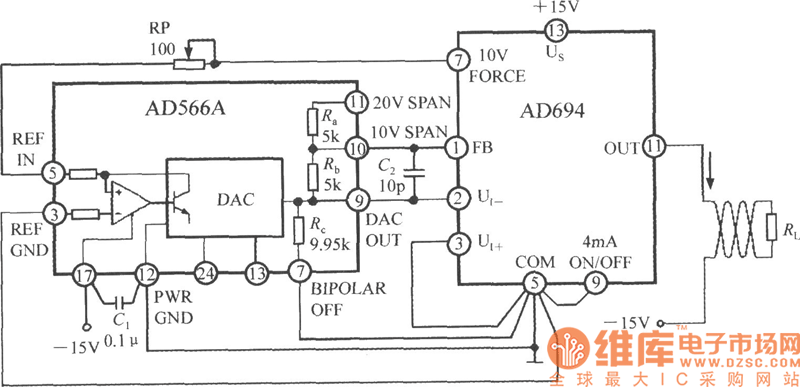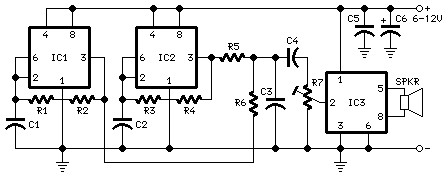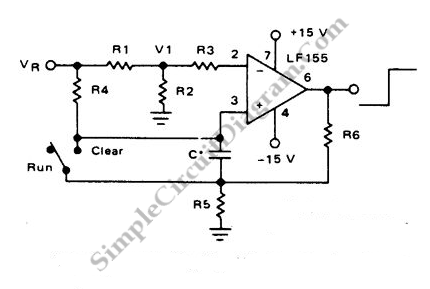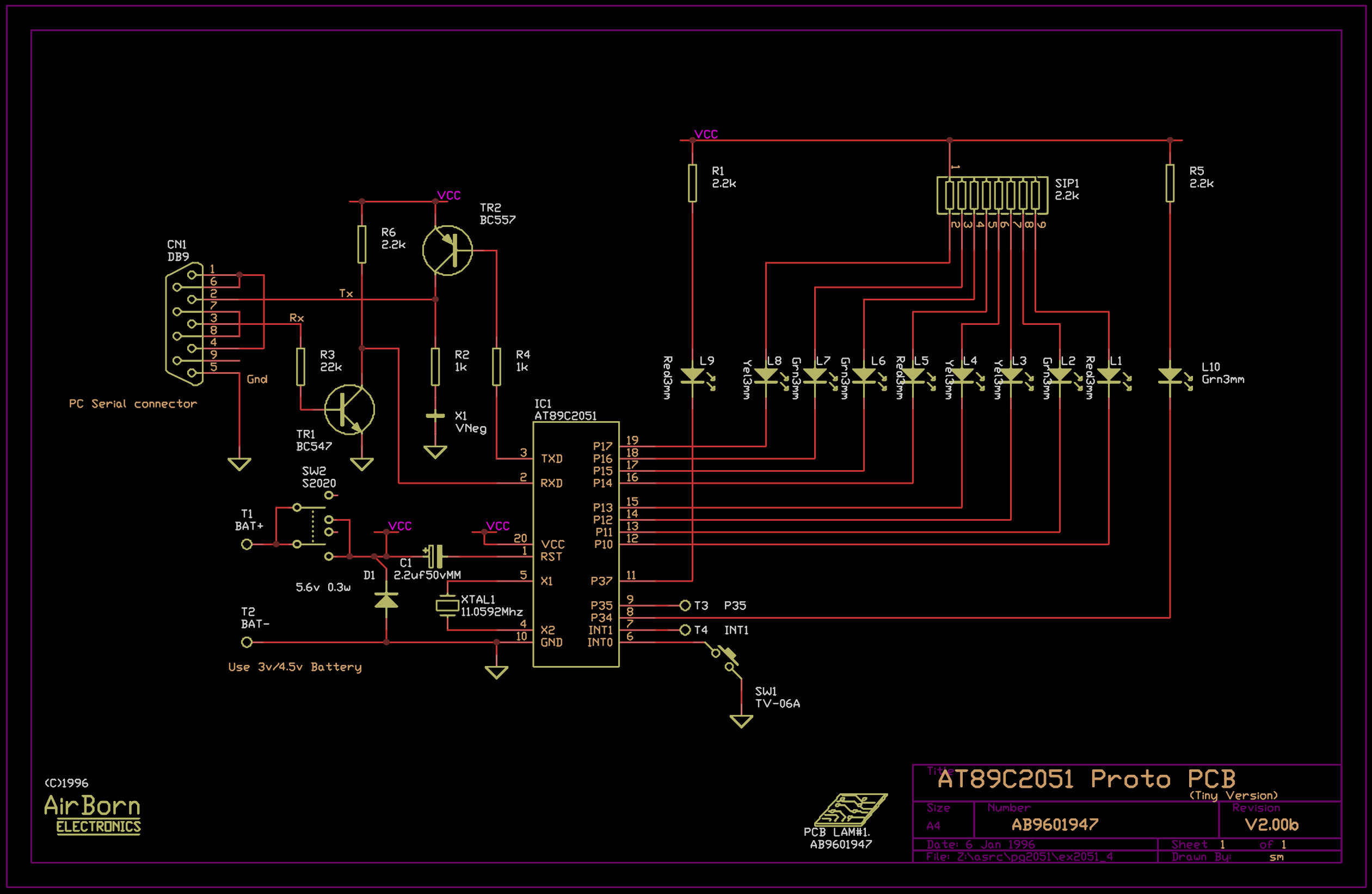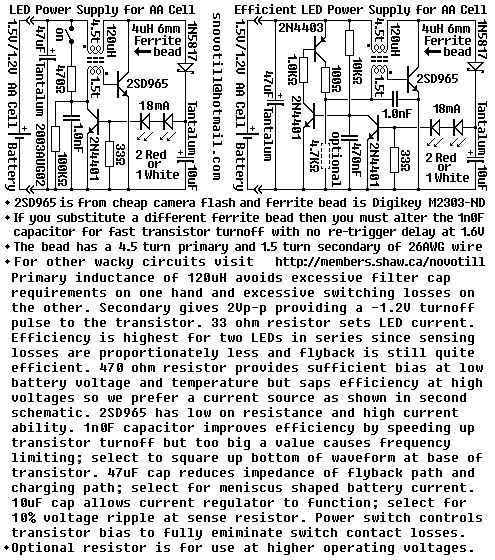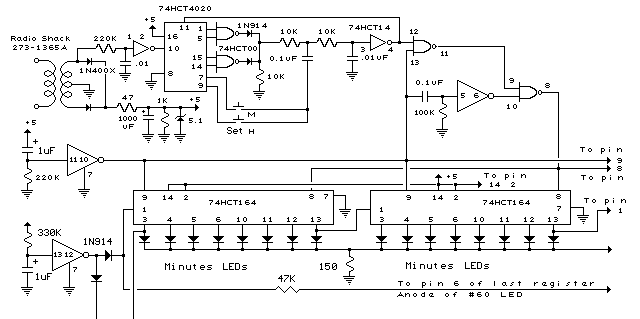
Constant current LED driver using LM3410
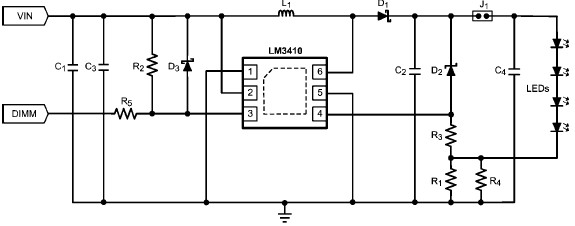
The LM3410 constant current LED driver is a monolithic integrated circuit that enables the design of high-efficiency, low-cost lighting solutions using a minimal number of electronic components. It employs current-mode control and internal compensation to ensure optimal performance across a wide range of operating conditions. Key features include dimming capabilities, cycle-by-cycle current limiting, and thermal shutdown protection. The schematic for this LED driver circuit is configured to drive four onboard LEDs in series with a total output voltage (VOUT) of 11.4V and an average LED current (ILED) of 190mA. The circuit operates with an input voltage range of 3.3V to 5.5V. The switching frequency of the LM3410 is set at 1.6MHz, which facilitates the use of compact surface mount inductors and chip capacitors. Additionally, the circuit supports PWM dimming by allowing a periodic pulse signal to be applied to the DIM terminal, enabling control over the duty cycle.
The LM3410 LED driver circuit is designed to provide efficient power management for LED applications, capitalizing on the integrated features of the LM3410 to minimize component count and enhance reliability. The device's current-mode control mechanism allows for precise regulation of the LED current, ensuring consistent brightness across varying input voltages. This is particularly beneficial in battery-operated devices where voltage fluctuations can occur.
The thermal shutdown feature is crucial for protecting the circuit from overheating, which can lead to LED failure or damage to the driver itself. By monitoring the internal temperature, the LM3410 can disable the output when it exceeds a predetermined threshold, allowing for safe operation in high-temperature environments.
The PWM dimming capability allows for versatile control of the LED brightness, making it suitable for applications requiring variable intensity lighting. By connecting a PWM signal to the DIM terminal, users can easily adjust the average LED current, thereby controlling the perceived brightness without introducing flicker.
In terms of component selection, the use of small surface mount inductors and capacitors is facilitated by the high switching frequency of 1.6MHz, which reduces the size of the passive components needed in the circuit. This results in a compact design that is ideal for space-constrained applications.
Overall, the LM3410 constant current LED driver circuit is an effective solution for driving multiple LEDs in series, offering a combination of efficiency, reliability, and ease of use, making it suitable for a wide range of lighting applications.Using the LM3410 constant current LED driver is a monolithic IC we can design, many high efficiency and low cost lights, using just few electronic components. The LM3410 utilizes current-mode control and internal compensation to provide high-performance over a wide range of operating conditions.
Additional features include dimming, cycle-by-cyc le current limit, and thermal shutdown. This LED driver schematic circuit is designed to drive four, on-board LEDs (VOUT = 11. 4V) in series at an average LED current (ILED) of 190mA. The circuit can accept an input voltage of 3. 3V-5. 5V. The switching frequency of the LM3410 converter is 1. 6MHz allowing the use of small surface mount inductors and chip capacitors. This LED driver circuit also features the PWM capability of the LM3410 by enabling the user to apply a periodic pulse signal to the DIM terminal of varying duty cycle. 🔗 External reference
The LM3410 LED driver circuit is designed to provide efficient power management for LED applications, capitalizing on the integrated features of the LM3410 to minimize component count and enhance reliability. The device's current-mode control mechanism allows for precise regulation of the LED current, ensuring consistent brightness across varying input voltages. This is particularly beneficial in battery-operated devices where voltage fluctuations can occur.
The thermal shutdown feature is crucial for protecting the circuit from overheating, which can lead to LED failure or damage to the driver itself. By monitoring the internal temperature, the LM3410 can disable the output when it exceeds a predetermined threshold, allowing for safe operation in high-temperature environments.
The PWM dimming capability allows for versatile control of the LED brightness, making it suitable for applications requiring variable intensity lighting. By connecting a PWM signal to the DIM terminal, users can easily adjust the average LED current, thereby controlling the perceived brightness without introducing flicker.
In terms of component selection, the use of small surface mount inductors and capacitors is facilitated by the high switching frequency of 1.6MHz, which reduces the size of the passive components needed in the circuit. This results in a compact design that is ideal for space-constrained applications.
Overall, the LM3410 constant current LED driver circuit is an effective solution for driving multiple LEDs in series, offering a combination of efficiency, reliability, and ease of use, making it suitable for a wide range of lighting applications.Using the LM3410 constant current LED driver is a monolithic IC we can design, many high efficiency and low cost lights, using just few electronic components. The LM3410 utilizes current-mode control and internal compensation to provide high-performance over a wide range of operating conditions.
Additional features include dimming, cycle-by-cyc le current limit, and thermal shutdown. This LED driver schematic circuit is designed to drive four, on-board LEDs (VOUT = 11. 4V) in series at an average LED current (ILED) of 190mA. The circuit can accept an input voltage of 3. 3V-5. 5V. The switching frequency of the LM3410 converter is 1. 6MHz allowing the use of small surface mount inductors and chip capacitors. This LED driver circuit also features the PWM capability of the LM3410 by enabling the user to apply a periodic pulse signal to the DIM terminal of varying duty cycle. 🔗 External reference
